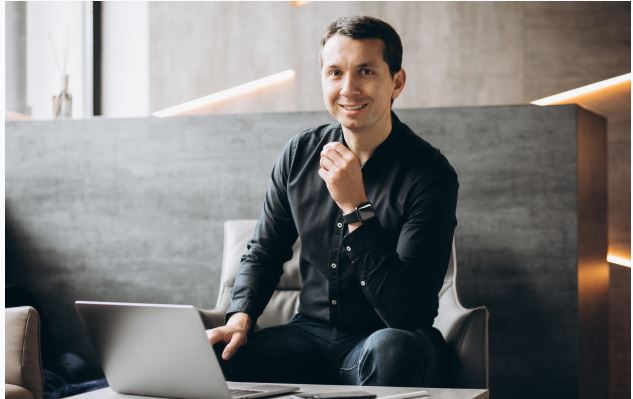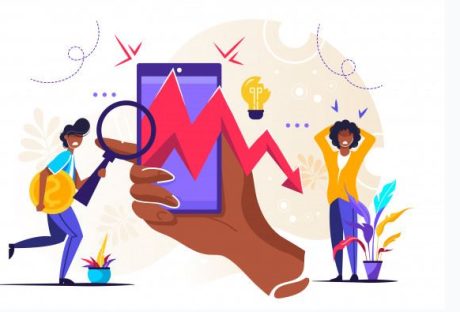Most of us are accustomed to the term entrepreneur. But in case you do not know what is a serial entrepreneur is, let me define a serial entrepreneur for you. A serial entrepreneur is someone who has more than one business in their bucket. They start one business, and then if they fail, they start another one. Or, in some cases, they sell the existing business in a great deal and start another one.
What Are The Characteristics Of A Serial Entrepreneur
Inc. Magazine says a strong sense of optimism and a high impact threshold characterizes successful entrepreneurs. These qualities are necessary due to the high risks that they take and the long hours of launching a small company when success seems to be a mirage in the desert. They also show strong self-reliance and a desire to stay innovative. They understand that money is not everything.
Entrepreneurs do not always have a guarantee of success when they open a chain of different businesses. Sometimes, just one business takes all of the focus of an entrepreneur.
Top 10 Best Serial Entrepreneur Of All Time

Here are the top 10 entrepreneurs of all time. Who never fails to amaze us with their new innovative business ideas. Here are the serial entrepreneur examples.
1. Anthony Mongeluzo
At the age of 21, Anthony Mongeluzo started his first professional company from his parent’s house and took a step towards being a serial entrepreneur. And that is Pro Computer Services. He also had other companies when he was a teenager.
He is also the CEO and President of an information technology firm in Marlton, N.J. After some time, PCS has gained regional as well as national recognition as one of the fastest-growing companies. With an annual revenue of $25 and 25 employees, PCS has offices in four states.
Companies:
- PilotLight studios
- Pro Computer Services
- Dynamic Telecom Solutions
2. James Currier
At the age of 6, James Currier started his entrepreneurial career as a worm seller, and now she is one of the best serial entrepreneurs. When he was in the 8th grade, he opened a store in his school cafeteria. By the time he graduated from Princeton University, he already had 18 little ventures in his bucket. Jiff Inc., which is well known for making HIPAA-compliant mobile software for the medical industry, is led by James Currier. He is not only the lead investor here but also the Executive Chairperson.
He has also founded Palo Alto-based Ooga Labs. It helps to develop e-commerce and mobile startups along with medical software.
Companies:
- Tickle
- Ooga Labs
- Jiff Inc
3. Ellen Thompson
Ellen Thompson has experience in starting and selling companies for more than 20 years. In 1993, Thompson founded a skill-testing firm named Know It All. In 2000, Kenexa Corp. had bought more than 300,000 shares. After she founded another company named 4 Walls, she is now the CEO of the company.
This company is based near Philadelphia and helps apartment owners get customers via search engine marketing and social media. The list of serial entrepreneurs will be incomplete without this name.
Companies:
- 4 Walls.
- Know It All.
4. Rod Drury
This New Zealand serial entrepreneur has had a fascination with computer technology since his teenage years, and he has transformed this fascination into his career. He helped found the software company Glazier Systems. In 1999, it was sold for around $7 million. He was also the founder of AfterMail, which is an email intelligence concern.
In 2006, the QSFT, or Quest Software, acquired AfterMail for $15 million. At present, Drury is the director of the New Zealand Stock Exchange, the director and founder of Pacific Fibre, and lastly, the Chief Executive Officer of an online accounting portal, Xero.
Companies:
- Pacific Fibre.
- AfterMail.
- Glazier Systems.
5. Janet Kraus
Janet Kraus is the senior lecturer at the Harvard Business School and has already started and sold 2 businesses. She is the co-founder of the concierge service company Circles. With her hard work, she developed the company with a revenue of $50 million. In 2007, she sold Circles to Sodexo. Just after that, she started leading Spire. This is a high-end social media business that is related to travel.
In 2010, it was sold to Perfect Escapes. He is another serial entrepreneur who finds it fascinating to start new ventures.
Companies:
- Spire.
- Circles.
6. Josh Kopelman
The managing director of First Round Capital, Josh Kopelman, is very fond of forming and investing in Internet companies. It has already been around two decades since he is doing this. In 1992, the Infonautics Corporation came to the public in 1996.
At that time, he was attending the Wharton School at the University of Pennsylvania. Three years later, in 1999, he started Half.com, which is an online store for used music and books. But just after one year, it was acquired by eBay. He has also invested in several startups, like mint.com and StumbleUpon.
Companies:
- TurnTide.
- Half.com.
- Infonautics.
7. Harpal Sandhu
Harpal Sandhu is the Chief Executive Officer and President of Integral Development Corporation. It is a Sunnyvale, California-based company owned by this serial entrepreneur. It was 1993 when he was the co-founder of this company. This organization claims to be the only multi-sided trading network that works for foreign exchanges.
Earlier, Sandhu was the president and founder of Infinity Financial Technology. In 1998, the software company SunGard Data Systems acquired Infinity Financial Technology.
Companies:
- Integral Development Corporation
- Infinity Financial technology
8. Gerard Ferro
It has already been more than two decades since Gerard Ferro has been setting up and running technology and health businesses. He is also the co-founder and CEO of a prescription discount business, Free For All, which is based in Marlton. Gerer Ferro also cofounded a pharmacy benefits management concern, SUNRx. He was also the chairperson and CEO of the organization.
Under his leadership, this company was able to gather a revenue of $49 million in its first five years. During the late 1980s, he was also the co-founder and CEO of Simacre.
Companies:
- SUNRx.
- Simcare.
- Free For All.
9. Oprah Winfrey
Oprah Winfrey is another shining star in the sky of serial entrepreneurs. When she was in high school, he started his career in the broadcasting industry. The media empire and her group of businesses across magazine publishing, radio, and television have made her a billionaire.
As per Forbes, her estimated net worth was $2.8 billion in 2018, and she is the wealthiest woman in show business. In 2011, she launched OWN or Oprah Winfrey Network. The official website of OWN claims that 70% of homes in the United States have OWN.
Companies:
- Oprah Winfrey Network.
- Harpo Productions.
10. Richard Branson
In 1970, when Sir Richard Branson was around 20 years old, he started a mail-order record business. After that, it was time for a record shop in London. Within a couple of years, he built a studio, where “Tubular Bells,” an instrumental by Mike Oldfield.
His Virgin Group now has around 200 companies in more than 30 different countries. Branson is also famous for promoting various social causes using celebrity power and his wealth. Being a prolific blogger, he also has written a book, which is published with the name “Screw Business as Usual.”
Companies:
- Virgin group.
11. Elon Musk
Any list of entrepreneurs is incomplete without Elon Musk. He is the billionaire mind behind Tesla CEO and the richest person alive as of 2023. Musk’s first try at business was a small start-up called Zip2. It was a searchable business directory, which is an online equivalent of Yellow Pages. Four years after the establishment of Zip2 in 1995, it was sold to Compaq Computers for $307 million.
Later, it was integrated into the AltaVista search engine. After the sale of Zip2, Musk moved on to build another company, x.com, which is an online payments app that was later known as PayPal. The company was sold to eBay for $1.5 billion. Highly by the success he invested in and founded SpaceX, Tesla Motors, and The Boring Company. In 2022, he bought the social media company Twitter and renamed it X.
Companies:
- Virgin Group
Conclusion
They are those entrepreneurs who have never failed to come up with new ideas in case one fails or is acquired by others. They have a bucket full of new and innovative ideas to lead and build a successful career path. They are inspirations for this generation’s entrepreneurs who are willing to make their own identity.
Learn More About:






















